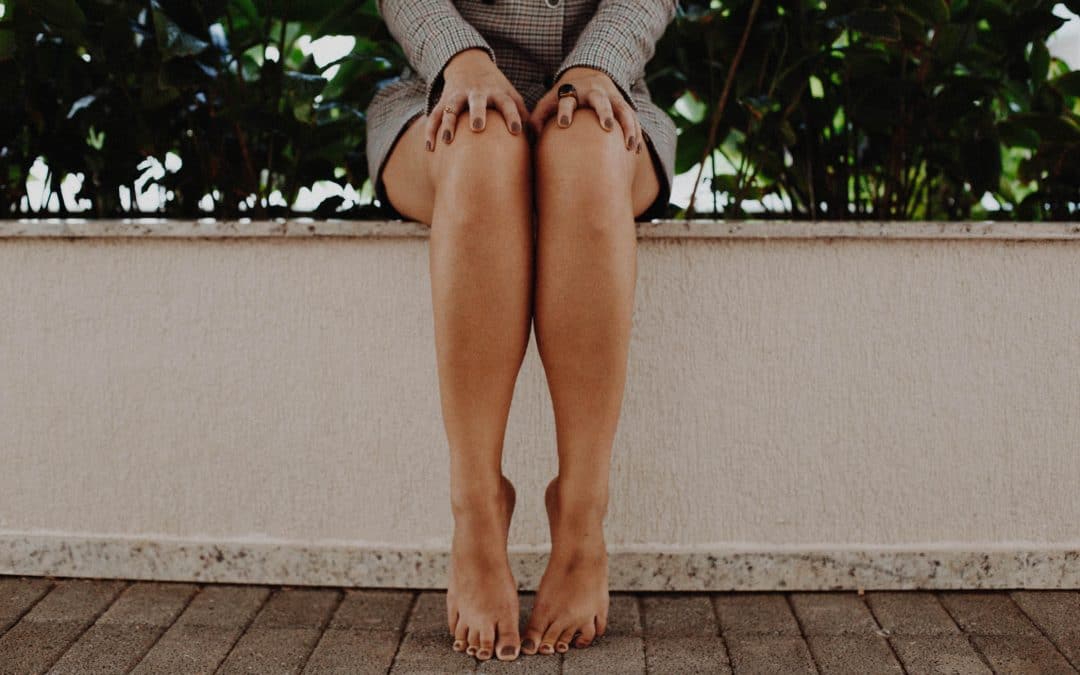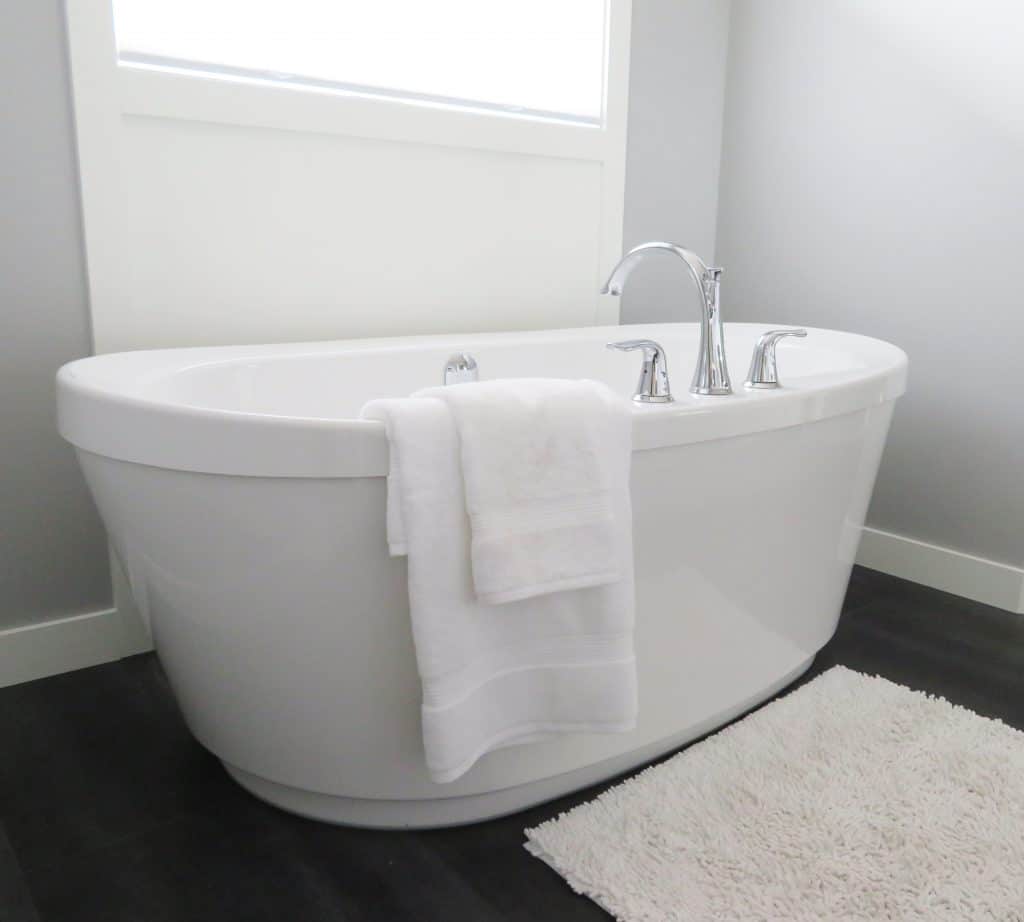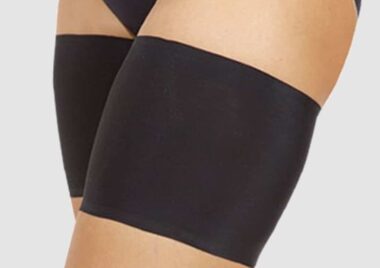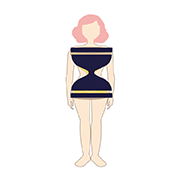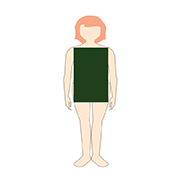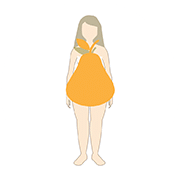Burning, inflamed inner thighs are a common issue for men and women of all shapes and sizes. Learn how to treat chafed thighs and prevent scarring or infection.
What Is Chafing & What Causes Chafed Thighs?
Chafing refers to the irritation of the skin caused by repetitive friction. This is usually generated through skin-on-skin contact of multiple body parts. It’s when that skin-on-skin friction combines with moisture where things really get ugly… And don’t even get me started on how the salt in sweat exacerbates the problem. This can turn a day at the beach into a painful thigh emergency!
Chafing between the thighs is super common. Most people have thighs that touch or rub together when they walk or exercise. The skin then gets irritated by heat, friction, moisture, and repeated rubbing against clothing. Chafing is most common in the inner thighs and inner glutes. But it can also occur elsewhere. For example, athletes often experience chafing around the armpits and nipples. Ouch!
Chafing is easily preventable by choosing specific types of clothing, or by wearing thigh bands or anti-chafing shorts. You can learn more about the causes and prevention of thigh chafing in our Resource For Thigh Chafing. If you are already suffering from chafing, read on to learn about treatments.
What Does Chafing Look Like?
Chafing will present as a mild to moderate red rash on the skin. The rash may sting or burn. In severe skin chafing cases, the rash could lead to swelling, bleeding, blisters or crusting. Chafing may be patchy, but it will not present with spots or bite-like lumps. If you suffer from ingrown hairs or stretch marks in the affected area these may also become inflamed and irritated.
Chafing does not usually require a medical diagnosis but if you are unsure what your rash is you should seek medical attention, of course. Those who have suffered from chafing before will recognize the telltale signs. As the weather heats up you can often feel more sweat and moisture between your legs and know that chafing may be on its way…
Common Symptoms of Thigh Chafing:
- Mild to moderate redness
- Stinging pain in the affected area
- Blisters, lesions, or boils
- A flat rash
- Itchiness as the skin heals
How Do You Treat Chafing?
Skin chafing shouldn’t be ignored. Without treatment, mild chafing can get worse and lead to bleeding, infections or scarring, so don’t ignore it. In most cases, at-home chafing solutions or over-the-counter products can be used to treat chafing. If the affected area is already very painful, swollen, bleeding, or crusted, you should seek medical attention. You may need a medicated ointment prescription to prevent an infection or scarring.
If your chafing is mild to moderate you can treat it at home using the following tips:
1. Clean and dry the area
Clean the area with mild soap and water to remove sweat and dirt. Use a clean towel to pat the skin until it completely dries. Avoid wearing sweaty or damp clothes, as this can make the affected area worse.
2. Apply a lubricant
To prevent further rubbing, you should apply a lubricant to the affected area of your thighs. A lubricant could be a common substance like petroleum jelly or a specialty chafing cream or chafing balm. You should avoid scented lotions which may irritate the skin further. Using a lubricant on the area will create a barrier to prevent further friction and chafing.
3. Bandage the area
If you have small blisters forming on the skin, you may need to use blister plasters. If you have multiple or serious blisters or experience bleeding, seek medical advice. You may need to be prescribed a medicated cream to prevent infection or scarring.
4. Wear preventative clothing
You can prevent the thighs from rubbing together even more by wearing preventative clothing. Choose clothes such as trousers in breathable fabrics and avoid wearing skirts or shorts until the chafing has healed. You can also wear anti-chafing shorts or thigh bands. These will work to prevent future chafing.
5. Hydrate
Drink tons of water! This may be the cheapest way to take care of our bodies, but it is sure to be the most effective, as it works from the inside out and prevents the skin from getting dry.
Prevent Further Chafing
Don’t let chafed thighs prevent you from enjoying your day-to-day life or favorite activities. Chafing is totally preventable by wearing thigh bands! If you regularly suffer from chafing, it may lead to permanent scarring or discoloration on the inner thighs. Talk to a dermatologist if you continue to get thigh chafing despite preventive measures.
-
Unisex
$19.99$19.99Small (Pants 2-4) A Med (Pants 6-8) B Large (Pants 10-12) C X-Large (Pants 14-16) D XX-Large (Pants 18-20) E XXX-Large (Pants 22-24) FThis option is required5.5" 6"This option is requiredThis option is required -
Dolce
$19.99$19.99Small (Pants 2-4) A Med (Pants 6-8) B Large (Pants 10-12) C X-Large (Pants 14-16) D XX-Large (Pants 18-20) E XXX-Large (Pants 22-24) FThis option is requiredThis option is required

